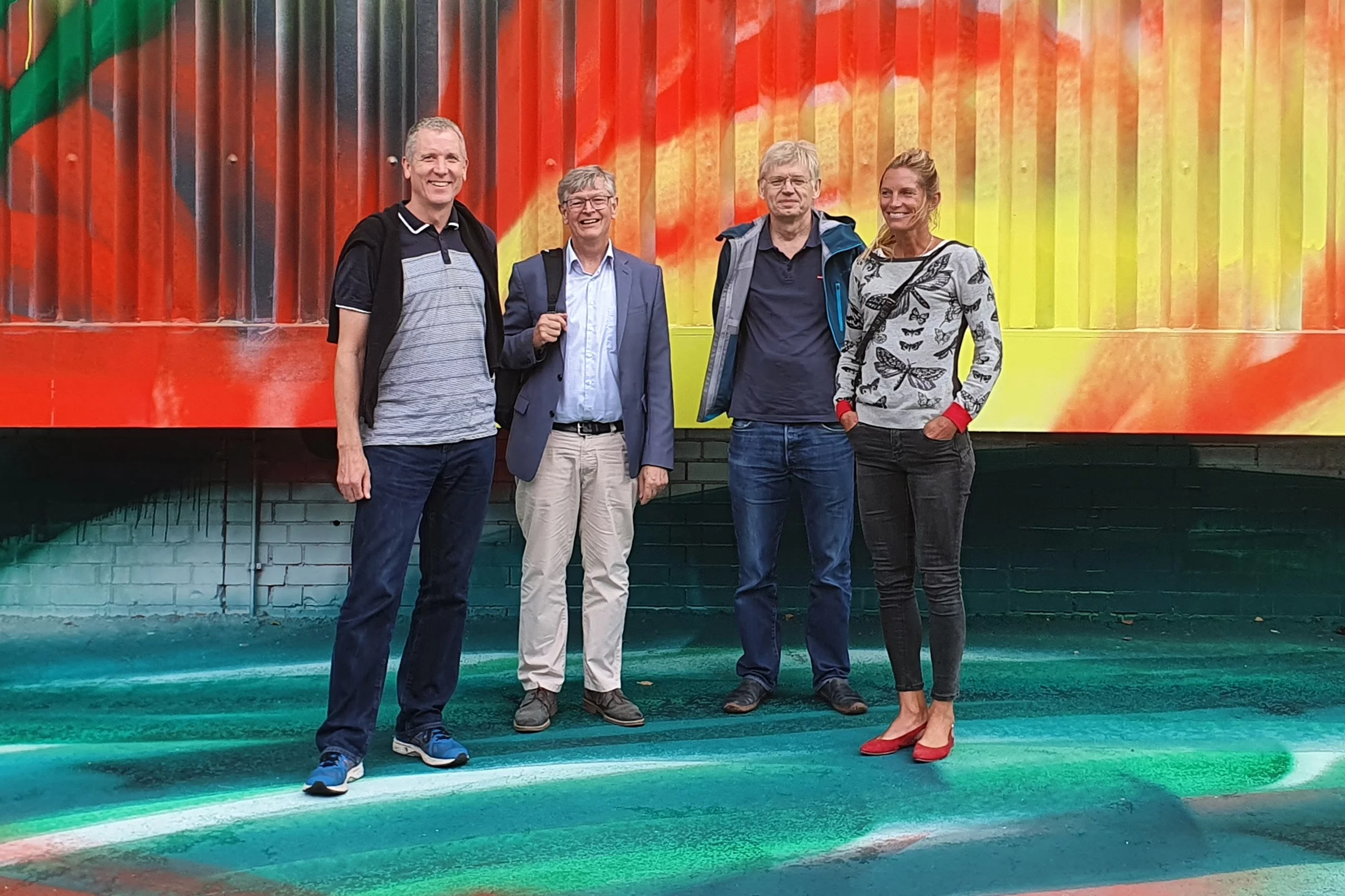The European Research Council (ERC) is providing 10 million euros in funding for an interdisciplinary, collaborative project in the structural and biophysical analysis of selected photoreceptors and their development into “OptoGPCRs”, light-controlled molecular switches with a wide range of applications in biology and medicine. The ERC Synergy Grant team consists of corresponding principal investigator Gebhard Schertler, head of the Division of Biology and Chemistry at PSI, and his colleagues Peter Hegemann (Humboldt University of Berlin, Germany), Sonja Kleinlogel (University of Bern, Switzerland), and Rob Lucas (University of Manchester, UK). Together they will demonstrate how OptoGPCRs can revolutionise our ability to control a wide variety of complex cellular processes with light.
The project funded by the ERC Synergy Grant “Switchable rhodOpsins in Life Sciences” – SOL – is based on so-called bistable rhodopsins. Rhodopsins belong to the class of so-called G protein coupled receptors (GPCRs). There are hundreds of different GPCRs activating a variety of different G proteins, and they play an important role in cell signalling in almost every cell type. Not surprisingly, they are the targets of a large variety of pharmaceuticals. Rhodopsins are light-activated GPCRs, best known for their role as light receptors in the retina of the human eye. Upon activation, the vision receptors in our eyes lose their light sensor, the vitamin A derivative retinal, and it must be “reassembled” in order to accept photons (light) again. Bistable rhodopsins, however, keep their retinal and can in principle be activated and deactivated by multiple flashes of light without requiring any assembly, acting as true biological “switches”.
Using light to “switch” a cellular process on and off
"Our consortium pursues three main goals", says Gebhard Schertler. "First, we want to elucidate the structure of the bistable rhodopsins in order to better understand how they function." Second, the researchers will use molecular biological methods to create bistable rhodopsins with novel properties that can be turned on and off by light of different wavelengths and effectively mimic the signalling effect of other GPCRs. "This will enable us to turn any G protein-mediated signalling process in any cell type on and off by light of a specific colour", Schertler explains. “Our third goal is to use these switches to study the effect of G protein signalling in animals and to use this knowledge for the development of gene therapeutics against human diseases.”
The second optogenetics revolution
The conception of the first generation of optogenetics introduced a revolutionary idea in modern life sciences and provided an outstanding example of how basic research on molecular properties of proteins can translate into a practical application in cellular and animal systems. Optogenetics has already made an enormous impact in neurosciences. Up to now, however, it has been limited to light-gated ion channels, restricting its application essentially to the stimulation of nerve cells. This has prevented widespread application of this technology in the life sciences. So far, attempts to extend the range of optogenetics tools towards the photo-control of cellular receptors such as GPCR have failed. The combined synergistic and interdisciplinary expertise of Gebhard Schertler, an expert in structural characterisation of these receptors, Peter Hegemann, a founding father of the first optogentics tools with an unmatched knowledge in biophysical characterisation of photoreceptors, Rob Lucas, a world-leading expert on bistable rhodopsins in mammals and an expert in cellular assays, and Sonja Kleinlogel, a pioneer in gene therapy using optogenetics, will provide the opportunity to deliver a toolbox of light-controlled cellular receptors with widespread applications in biology and medicine.
Schertler and Lucas were part of an international “Human Frontier Science Program” funded project, which provided important preliminary data for this ERC SynergyGrant, which is funded by the European Union over a period of six years. This ERC grant has a realistic chance to become the catalyst for a “second optogenetics revolution” with PSI as leading institution playing a pivotal role in extending the boundaries of modern life sciences.
Text: Paul Scherrer Institute
About PSI
The Paul Scherrer Institute PSI develops, builds and operates large, complex research facilities and makes them available to the national and international research community. The institute's own key research priorities are in the fields of matter and materials, energy and environment and human health. PSI is committed to the training of future generations. Therefore about one quarter of our staff are post-docs, post-graduates or apprentices. Altogether PSI employs 2100 people, thus being the largest research institute in Switzerland. The annual budget amounts to approximately CHF 400 million. PSI is part of the ETH Domain, with the other members being the two Swiss Federal Institutes of Technology, ETH Zurich and EPFL Lausanne, as well as Eawag (Swiss Federal Institute of Aquatic Science and Technology), Empa (Swiss Federal Laboratories for Materials Science and Technology) and WSL (Swiss Federal Institute for Forest, Snow and Landscape Research). (Last updated in May 2020)
Contact
Prof. Dr. Gebhard Schertler
Head of the Biology and Chemistry Division
Paul Scherrer Institute, Forschungsstrasse 111, 5232 Villigen PSI, Switzerland
Telephone: +41 56 310 42 65, e-mail: gebhard.schertler@psi.ch [German, English]
Copyright
PSI provides image and/or video material free of charge for media coverage of the content of the above text. Use of this material for other purposes is not permitted. This also includes the transfer of the image and video material into databases as well as sale by third parties.

